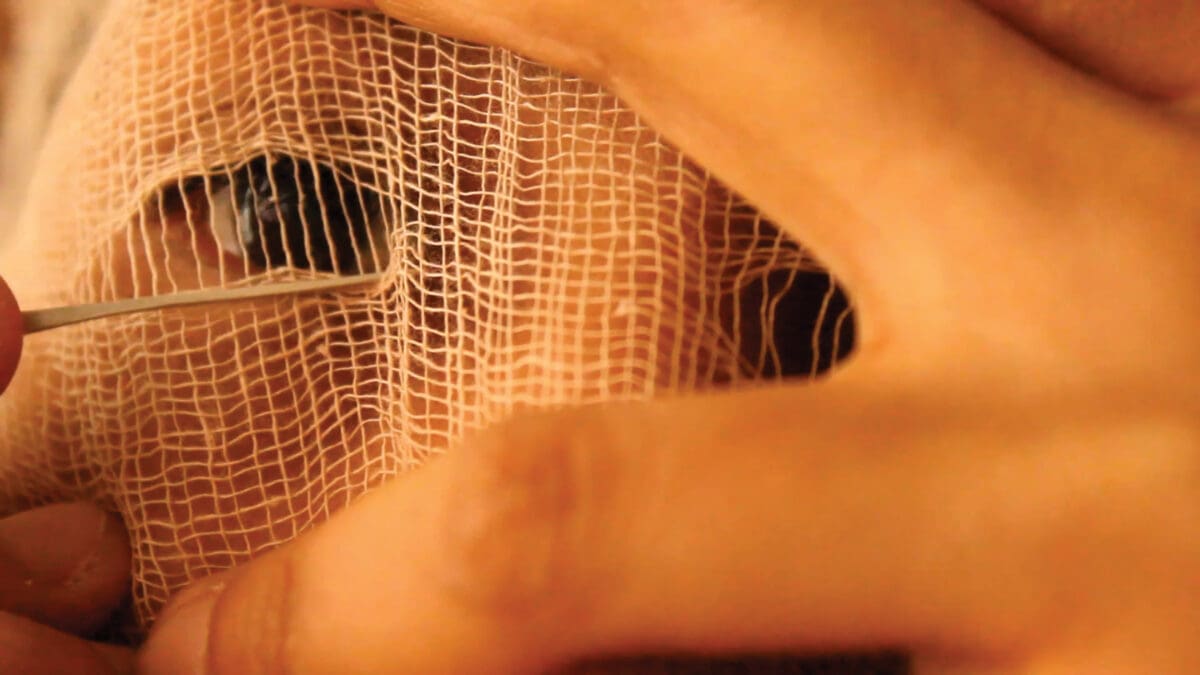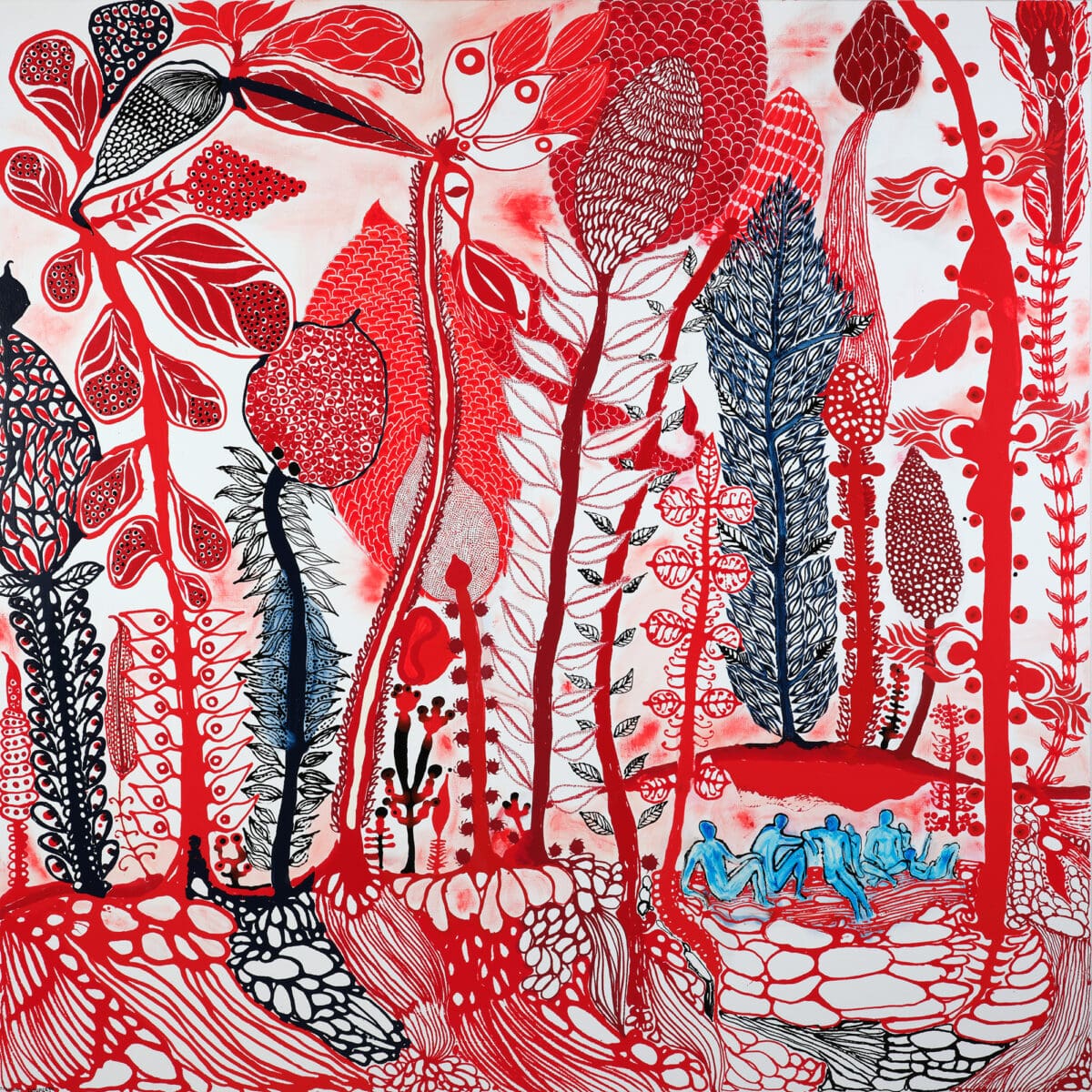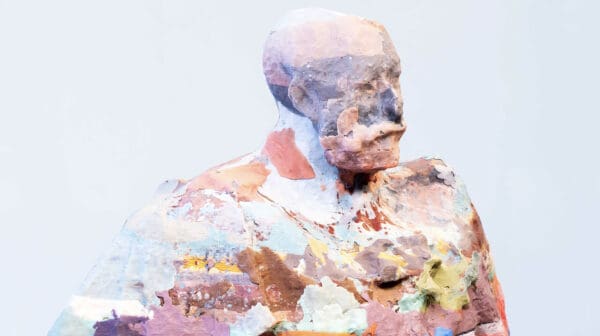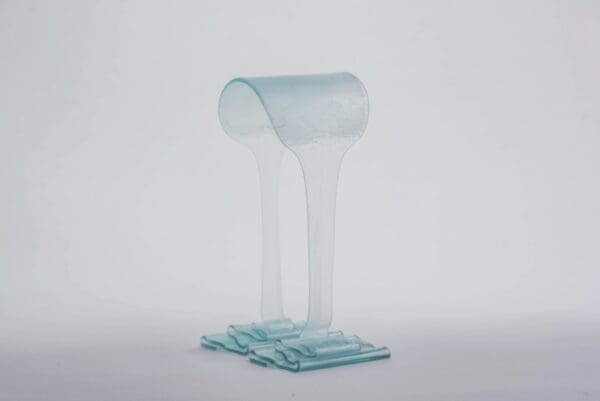When Cristina Flores Pescorán weaves, she isn’t just suturing materials together. She is restoring connections with the women that came before her. She is recovering what her body already knows. The Peruvian artist started making textiles when, during a period of illness, she was subject to invasive medical procedures. The practice she rejected as a child growing up in Lima and Trujillo was now a source of ritual healing.
“I had a kind of [skin cancer], a pigmentation and I started to understand what was happening on my skin as a way to repair fractures that exist in the story of my family,” she says. “I had several kinds of treatment, but nothing worked. I am not a number. I have emotions, textures and colours. One day it was clear that I needed to start weaving. I wanted to heal in different dimensions.”
Pescorán is a thoughtful presence who voices her ideas with a quiet intensity. She has just arrived in Australia from her base in the Netherlands to install Abrazar el Sol, a textile installation that will be suspended at White Bay Power Station as part of Ten Thousand Suns. It’s part of a historic project featuring 14 new works by Indigenous artists from around the world, curated by the renowned Kuku Yalanji artist Tony Albert and commissioned by the Paris-based cultural institution Fondation Cartier pour l’art contemporain.
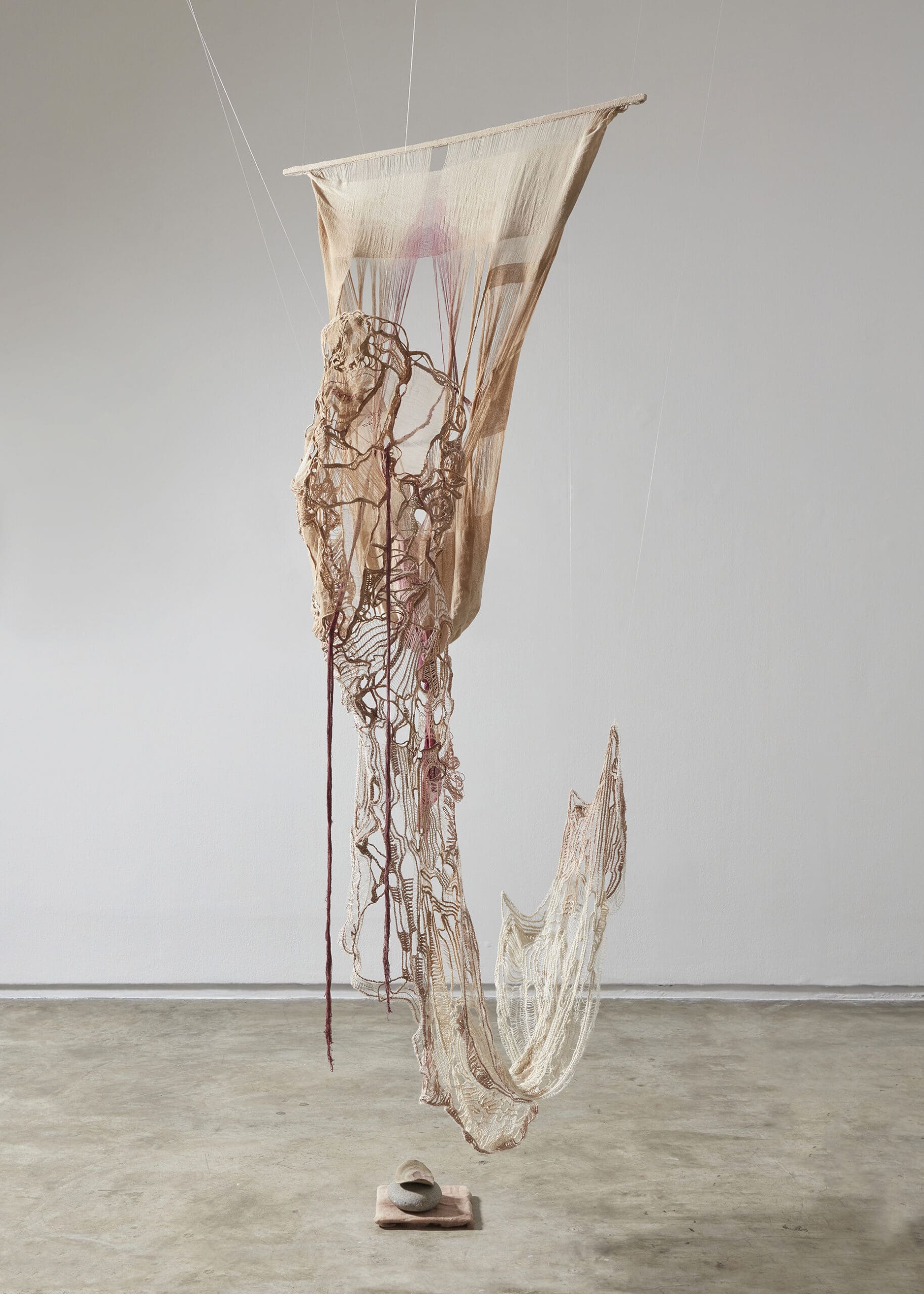
“The magic happens when you hand opportunities to a community with autonomy and their own methodology,” says Albert, who was appointed the Fondation Cartier’s First Nations Fellow in 2023, part of the organisation’s long-term commitment to fostering Indigenous art and culture at the Biennale of Sydney. “If I can start something that continues to thrive and [enable] Indigenous curators and artists to be seen on a global platform, I would be so happy.”
Albert’s previous collaboration with the Fondation Cartier and the Biennale of Sydney took the form of Badu Gili. The six-minute animation, projected on the Sydney Opera House, saw legendary Meriam artist Gail Mabo and Te Rarawa and Ngāpuhi artist Nikau Hindin interpret distinct stories of celestial navigation. This notion of finding commonality amid difference, Albert says, underpins his approach to Ten Thousand Suns.
“My sun story is different from your sun story— yet there is only one sun,” he says.
The Fondation Cartier’s presentation at the Biennale of Sydney will include new works by Mangala Bai Maravi, an artist from Madhya Pradesh whose bold, monochrome paintings revive traditional Baiga tattoo designs. Dylan Mooney, a Yuwi, Torres Strait and South Sea Islander man, will revisit the legacy of Malcolm Cole, a queer Indigenous activist who dressed up as Captain Cook during the 1988 Mardi Gras.

Hindin—who is known for kites imprinted with delicate motifs that riff on Tāniko, a traditional Māori technique—will show new work, alongside Pescorán, at the White Bay Power Station.
“[These] artists are reviving culture, something I was never able to do,” Albert says, pointing to Darrell Sibosado, a Bard man from the Dampier Peninsula who will present a light installation, based on Western Australian shell carvings.
“I think we are at a point where the younger generation don’t have to be as politically engaged. To know that artists are picking up weaving techniques, remaking shields and cultural objects! They might be using alternative methods or materials, but to me that’s incredible.”
Collaborating with these artists, he says, has been less about imposing his own vision and more about accommodating cultural nuances and helping them realise their greatest dreams for their work.
“I took Nikau Hindin out onto Country [for] ceremony and was able to feel a culturally safe way for her to be indoctrinated into this place,” he says. “[Non-verbal artist] Doreen Chapman is presented at every single location. She can’t communicate through English, so it’s an opportunity to engage with other Blackfellas that will make her feel at home.”
Pescorán tells me about the homesickness she endured during the first period she spent outside Peru. “I wanted to prepare chicha, which is a maize beverage you can find in every market,” she says. “I started working with maize morado—or purple corn— dying fibres. It’s very intense and changes with parts of the day—it starts as red and [becomes] purple.”
Over Zoom, the artist, who will perform and read poetry during the Biennale’s opening weekend, shows me an intricate skein of yarn, rippled with rich violet. “This Peruvian native cotton has a particular story,” she says. “It is from the northern coast of Peru, where my family comes from, and it was forbidden because the government believed it would contaminate the industrial white cotton for many years.”
For Pescorán, the material symbolises the ways in which certain bodies are disregarded. Abrazar el Sol, she says, will also reference the veils conceived by the pre-Incan Chancay culture, believed to possess powers of healing and protection. In referencing the warp and weft used in the construction of Chancay veils, Pescorán entwines the personal and organic with Chancay techniques, creating a dialogue with both the history and meaning of the veils.
“I am working with threads to make knots that are inspired by the culture of the coast of Peru and these magical textiles,” she smiles. “The cotton is hand spun so you can perceive its irregularity. For me, it is an honour.”
Cartier pour l’art contemporain
Art Gallery of New South Wales, Artspace, Sydney Opera House, Museum of Contemporary Art, Chau Chak Wing Museum, UNSW Galleries and White Bay Power Station
24th Biennale of Sydney: Ten Thousand Suns
9 March—10 June
This article was originally published in the March/April 2024 print edition of Art Guide Australia.



